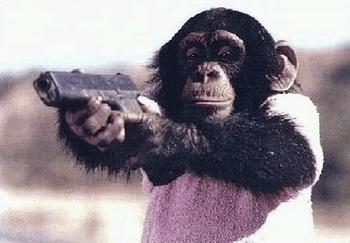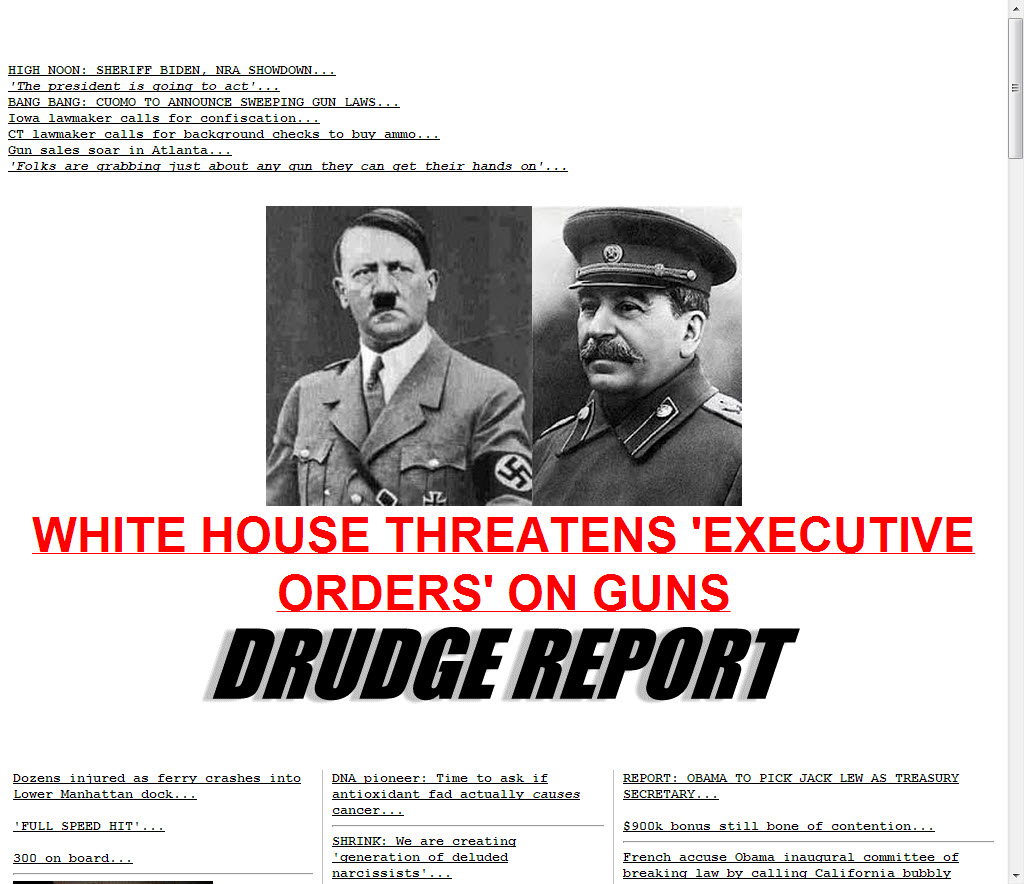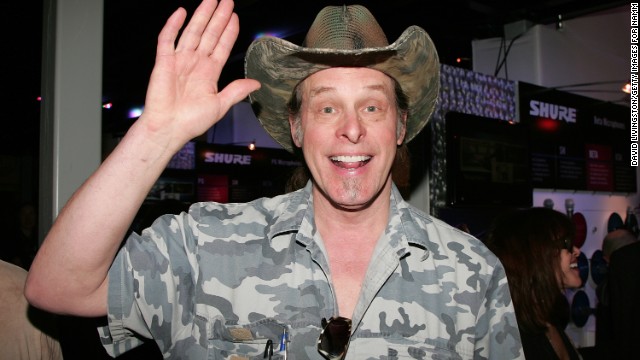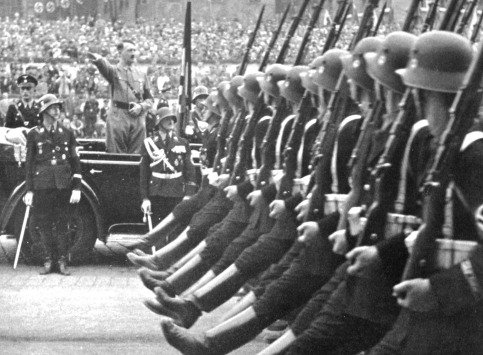Alex Constantine - January 17, 2013
By Lewis Diuguid
Kansas City Star, January 11, 2013
 Fear keeps causing gun sales to spike.
Fear keeps causing gun sales to spike.
The 2008 election of Barack Obama as president started it with people afraid that the new president would take away their guns. Since then, 67 million firearms have been sold in the U.S. The Kansas City Star reports that the number exceeds what had been purchased in the previous seven years.
Keep in mind that threats against the president also have spiked, including one gunman taking a pot-shot at the White House. That had never happened before.
Recurring mass shootings in this country continue to spur sales as gun advocates fear a government clampdown on individuals’ ability to purchase whatever weapon they want whenever and wherever they want. Vice President Joe Biden’s intent on recommending by Tuesday to President Obama gun control measures is certain to cause gun sales to spike anew.
Count on gun-hungry customer traffic being up Saturday and Sunday at the Gun-Knife Show at the KCI Expo Center, 11730 N. Ambassador Drive. Parking there will be a nightmare.
The Violence Policy Center in an article on the Web notes that the assassinations of President John F. Kennedy, the Rev. Martin Luther King Jr., Sen. Bobby Kennedy and rioting in the civil rights era in the 1960s pushed the pro-gun National Rifle Association into a corner, resulting in meaningful gun control legislation.
The article said:
“On March 8, 1965, President Lyndon B. Johnson, linking “the ease with which any person can acquire firearms” to the country’s rising violent crime rate, called for increased gun controls….
“The NRA’s ability to stop any gun control measure ended in 1968. On April 4, 1968, Martin Luther King was gunned down on the balcony of the Lorraine Motel in Memphis. (We prepare now to celebrate the national holiday marking the slain civil rights leader’s birth 84 years ago.) The next day the Omnibus Crime Control and Safe Streets Act of 1968 — which was amended to include a ban on the interstate sale and shipment of handguns — became the first firearms control bill to pass out of committee since 1938.
“On June 5, against a backdrop of urban rioting, New York Democratic Senator Robert Kennedy — who had just won the California presidential primary — was gunned down in Los Angeles. ... He died the next day.
“That same day, the crime bill cleared Congress. It was signed into law on June 19. Although the public supported stricter gun controls (a January 1967 Gallup poll found that 70 percent believed that “laws concerning handguns should be more strict”), most Americans had never been motivated to act.
“Now they were. As historian Richard Hofstadter noted in 1970, after the killings ‘there was an almost touching national revulsion against our own gun culture.’ (We are close to that today after 20 schoolchildren and six adults were gunned down Dec. 14 at Sandy Hook Elementary School in Newtown, Conn.) Letters poured into Capitol Hill while enraged citizens picketed the NRA’s headquarters.
“‘Can Three Assassins Kill a Civil Right?’ asked the NRA in the July 1968 Rifleman. A besieged (NRA Executive Vice President Franklin) Orth promised that Kennedy’s assassination could not have been prevented by any law “now in existence or proposed.”
That was 45 years ago, but the NRA arguments sound so familiar today. More gun control laws were proposed in 1968 with President Johnson finally signing the Gun Control Act of 1968, on Oct. 22, 1968.
Such strident gun control measures following national outrage over shootings is what the NRA wants to prevent now and in the future. The real gunfight hasn’t even begun yet.



